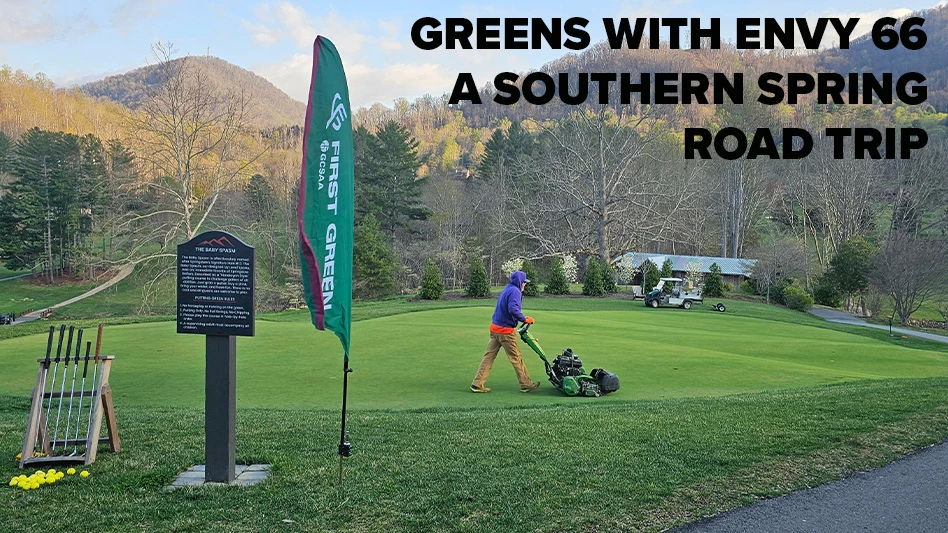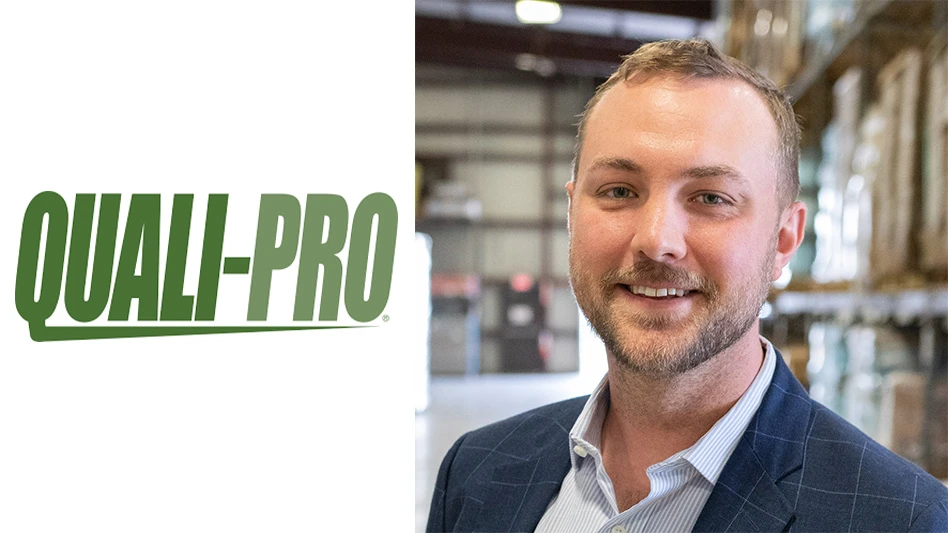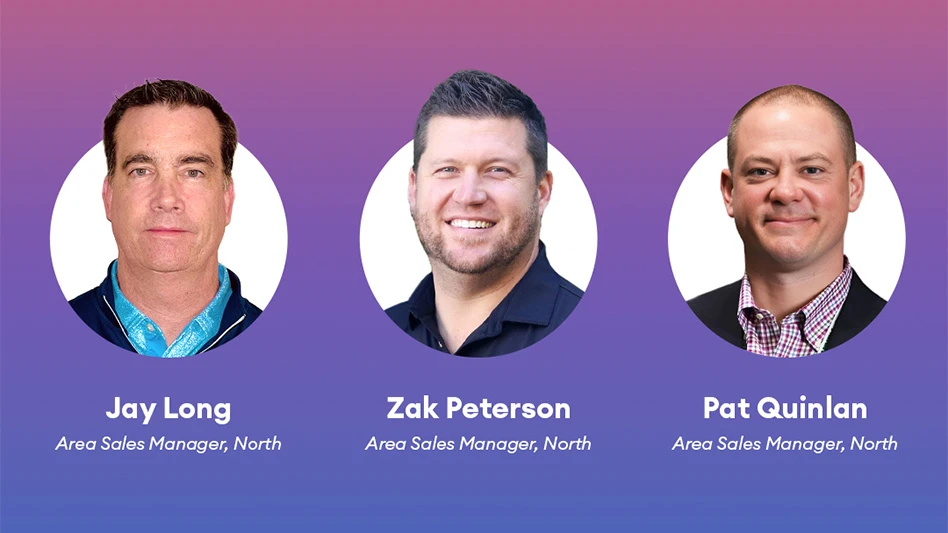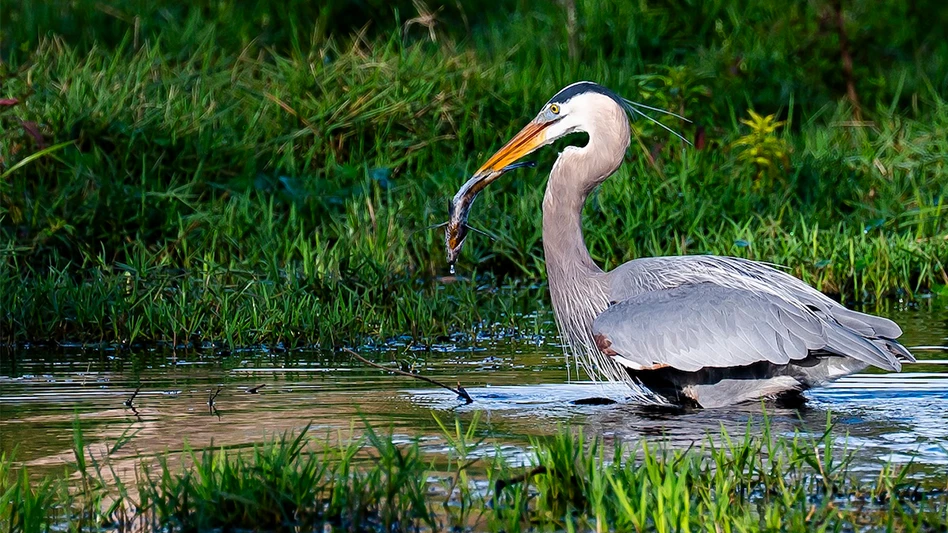
In the historical novel “A Land Remembered,” a Florida family captivated generations of readers with tales about living off the state’s untamed land in the late 1800s and traversing through pristine places like the Myakka River Valley, where Native Americans and namesake Cracker cattle freely roamed among the intrepid pioneers.
More than 125 years later, another group of Florida pioneers is back in historic Myakka City, settling along the Myakka River and capturing the attention of another audience: the golf industry. This time, the captivating tales are about growing revolutionary new turfgrass varieties and creating one of America’s most extraordinary golf clubs in southwest Florida’s last unspoiled section of the rapidly growing Bradenton-Sarasota region.
If these modern Myakka pioneers can successfully pull off their namesake Miakka Golf Club as planned, this 1,100-acre pure golf property is also poised to be “A Land Remembered” for generations to come. At least that’s one way to describe the excitement building behind the significant scale of Miakka’s innovative Australian Sandbelt design aesthetics and construction techniques, led by architects Dana Fry and Jason Straka of Fry/Straka Global Golf Design, former PGA Tour star and native son Paul Azinger, newly hired director of agronomy Terry Kennelly, project manager Owen Hester of Melbourne, Australia-based Green Golf Consulting, and irrigation contractor juggernaut John Leibold, whose namesake company is synonymous with high-end golf.
The mastermind behind what the Fry/Straka design duo describe as a “pinnacle project” for golf and the environment is entrepreneur Steve Herrig, who is close friends with Azinger and Leibold, both of whom have long ties to the area.
“This is going to be one of the very best — if not the best course — in the state of Florida,” Fry said during a groundbreaking event this past April. “And it’s going to be one of the great golf courses in the United States and in the world. And it all stems from Steve.”
Herrig, 64, says he didn’t start playing golf until he was about 25, after moving to the Florida Gulf Coast in 1985, which, interestingly, happened to be around the time when Patrick D. Smith’s popular novel was published and started to become an epic must-read about Old Florida.
An avid outdoorsman, Herrig is no stranger to the golf business, having been one-time business partners with Leibold, who went to high school with Herrig in Dubuque, Iowa. In fact, Herrig credits Leibold for figuratively planting the Miakka turfgrass seeds after seeing the picturesque parcel Herrig assembled in recent years with two miles of precious Myakka River frontage.
“This land where the golf course is, when it came up (for sale), I just bought it because I wanted to tool around in my ATV,” says Herrig, who became close to Azinger after 30 years of friendship as members at Gator Creek Golf Club in Sarasota. “There was like 200 acres of just beautiful, beautiful Old Florida. Old Hammock trails. … One day, Leibold and I were sitting around out here, and he says, you should build a golf course.”
Herrig went on to say with a smile: “I’m like, ‘Why don’t you build a golf course?’ True story. And then I thought, what a great property for that.”
The rest is shaping up to be Miakka turfgrass and course construction history. Indeed, after growing up in Sarasota and going on to a star-studded professional career, Azinger arguably put the Bradenton-Sarasota area on the golf map. Now, in tandem with Fry and Straka, the trio is poised to put this tiny Florida town on the global map.
Miakka Golf Club, which adopted the town’s original spelling used by Native Americans who once lived and fished along the scenic Myakka River, is already associated with some rarified recreational real estate. The club is adjacent to world-renowned TerraNova Equestrian Center and southwest Florida’s premier new equestrian community, The Estates at TerraNova, both of which are developed and owned by Herrig.
Miakka is marketing a limited number of invitation-only local and national memberships that will likely be some of the priciest in the industry. Besides an 18-hole championship course designed to one day host high-profile events of international caliber, members will have an additional 12-hole par-3 layout, seven-acre short-game facility, 2½-acre lighted putting course, golf performance and fitness center, and a 450-yard-wide, 360-degree driving range.
At the architects’ panel discussion prior to the groundbreaking in April, Straka said Miakka is “one of the best natural sites for golf and one of the best teams we’ve ever been affiliated with.”
Perhaps the most remarkable aspect of Miakka is the design team’s choice of zoysiagrass from tee to green. After years of using it as the go-to environmental and player-friendly turfgrass at numerous Asian projects, and seeing promising new strains in production at Bladerunner Farms near San Antonio, Straka and Fry convinced Herrig to use two newer University of Georgia-bred varieties: Stadium Zoysia for the tees and fairways; Lazer for the greens.
Not only was the contrarian turfgrass decision a daring choice for Florida’s Bermudagrass-dominant golf landscape: Herrig decided to go even bolder and bigger, sodding the entire 145-acre course except for the greens, which are being sprigged.
And to ensure Herrig never runs out of what he hopes might be the turfgrass of the future, Herrig purchased an additional 1,600 acres across the street with approximately 500 acres already prepped for zoysiagrass production. Herrig also gained distribution rights for a “big chunk of Florida,” Straka says.
Situated just a couple miles from 37,000-acre Myakka River State Park, one of Florida’s oldest and largest parks, Miakka is destined to be a course that looks and plays like no other in Florida when it opens in late 2025. Consider: Miakka is not only sand-capping the entire 7,700-yard layout, but crews are installing an additional 15 to 20 feet of underdrainage beneath the sand-capped surface.
In other words, Miakka is building an estimated 145-acre playing surface at “incredible expense,” Fry adds, to deliver some of the firmest and fastest conditions imaginable.

“We want to have the fastest, firmest playing surface anyone certainly has ever seen in the state of Florida,” Fry says. “Much like Congaree in South Carolina, which is probably the fastest, firmest course I’ve been to. I was just there (in April). It is so very expensive to do that. But Steve’s commitment is to have the playing style we’re doing, and we’ve got to have fast.
“With all this underground drainage and the proper sand capping, we can get a 4-to-5-inch rain and, in a few hours, the ball’s going to carry and it’s going to bounce and it’s going to go. Steve is going to extra length to make something really special.”
As part of their effort to design a truly distinctive new Florida course — or anywhere else in America, for that matter — Fry and Straka settled on one of their favorite architectural styles: the Australian Sandbelt. Inspired by places like historic Royal Melbourne, Kingston Heath and Peninsula Kingswood, Miakka will be a vast and wide-open layout with no rough. Greens will be maintained and mowed right to the rarely seen Aussie-style bunker’s edge.
This is where Hester brings significant Sandbelt knowledge to Miakka, having grown up in Melbourne. Another reason Hester was hired to oversee the whole project is his background in managing large-scale global golf developments, including 12-course Mission Hills in Shenzhen, China.
On the subject of big-time builders, Miakka has six world-class shapers on site and, by last count, was moving some 3 million cubic yards of dirt. Among the goals of this extraordinary amount of earthwork: digging a signature 40-acre lake and creating 48 feet of rare Florida elevation at the peak clubhouse setting that will feature 270-degree panoramic views of virtually the entire course. Fry says it will be reminiscent of his “favorite golf course in the world” Shinnecock Hills.
“The clubhouse at Shinnecock Hills is one of the most iconic clubhouses ever built in golf history,” Fry says. “What’s so cool about it is when you’re on the golf course you see it from about 15 or 16 different golf holes. (Miakka’s) the same way. Even from the par-3 course. So, it’s the vastness of the site, which is just unique.”
Other memorable architectural aspects about Miakka will be ribbon tees laid out throughout the course with wall-to-wall zoysiagrass maintained at fairway height.
“Here’s the interesting thing about the grass,” Straka says. “What we’re finding out is it takes considerably less water, considerably less fertilizer and considerably less pesticides.”
When asked why more Florida courses aren’t considering zoysiagrass, the cost of sodding this relatively slow-growing species is one clear hurdle when time is of the development essence. Ultimately, Straka says resistance just comes down to the “unknowns and being new.”
“In the United States, it’s got the moniker of being the Transition Zone grass, but this actually is a tropical grass,” Straka says. “Dana and I do a lot of work in Asia, so when we’re in Singapore and Vietnam and other tropical places, the actual grass is predominantly zoysia. … The biggest thing for us, going all the way back to Mike Hurdzan, we’ve always sort of pushed the envelope and cutting edge of things.
“Now you’ve got superintendents, especially being through El Niño, they come here and they’re like, ‘Oh my God, this is something we got to look at.”
Another Miakka construction element that will certainly be a must-see for industry observers is the significant sand-capped nature of the course. According to Straka, after experimenting with 28 different types of sands, mixes and blends, and testing for water release curves and firmness ratings, the team discovered the “perfect blend to be six inches,” comprised of locally sourced sand blended with 10 percent Profile.
At times, the sum of all the Miakka turfgrass and course construction parts seems too good to be true. But Kennelly, who joined Miakka as director of agronomy in July, knew the project was in the works for more than three years thanks to his decades-long friend Leibold, who convinced him to visit the property.
Timing notwithstanding, Kennelly, 55, concedes that the notion of going to such an ambitious project at this stage in his illustrious career and being tasked with overseeing an atypical unknown turfgrass in South Florida caused some initial hesitation when Herrig approached him about the job.
“I said, ‘I have some reservations and the biggest was probably the zoysia,’” Kennelly says. “I don’t care if it’s golf or any other type of industry, we all like challenges, but we all want to set ourselves up for success. No one goes into something like this thinking failure, but you’re thinking, Man , I don’t know about this. I want to work 10 more years, and I want to go out on top.” After pausing for a second, Kennelly adds with a smile: “I don’t want to go out as the guy that tried to do something crazy.”
Nevertheless, with continued positive turfgrass tidbits coming out of Miakka, Kennelly’s cultivar curiosities were piqued again, and he made another trip to see Miakka’s zoysiagrasses. He left impressed and conducted more invaluable due diligence with superintendent Brock Alexander, whom Kennelly previously hired to work for him at The Concession Golf Club in Bradenton.
Due to their trusted relationship, Kennelly could be frank about the zoysiagrass and asked Alexander if he had any reservations after growing it in and managing the cultivars for close to a year.
“He said, ‘Well, you know, some,’” Kennelly recalls, “But I’ll tell you what, the more we looked at it, I was like, ‘I think I can make this work.’ And it’s not being arrogant or cocky because I like to think of myself as a humble person. But anybody in this business, I mean, when you see this grass, the texture, its foundation and root system, and everything else, you think, wow.
“And never once did it ever register in my mind that we were the only place to do it. I’m not going to say it doesn’t mean anything to me, but my No. 1 goal is quite honestly to work for Steve and give Steve the best product I can. It’s not about setting a standard in the industry or trying to be revolutionary or anything. I just want to make sure Steve gets what he wants.”
In the end, if Kennelly and everyone else does their part in successfully building this innovative high-profile course, Miakka will undoubtedly be “A Land Remembered” in its own right for years to come.

Explore the October 2024 Issue
Check out more from this issue and find your next story to read.
Latest from Golf Course Industry
- From the publisher’s pen: Technology diffusion and turf
- Applications open for 2025 Syngenta Business Institute
- Smart Greens Episode 1: Welcome to the digital agronomy era
- PBI-Gordon promotes Jeff Marvin
- USGA investing $1 million into Western Pennsylvania public golf
- KemperSports taps new strategy EVP
- Audubon International marks Earth Day in growth mode
- Editor’s notebook: Do your part





